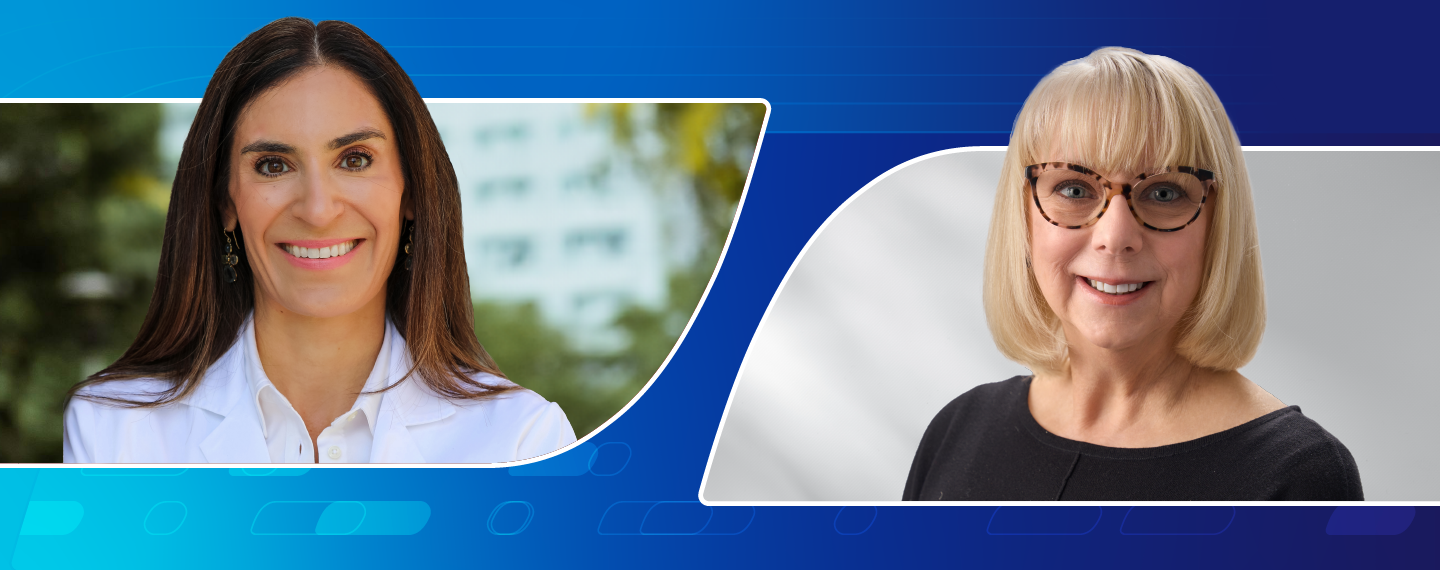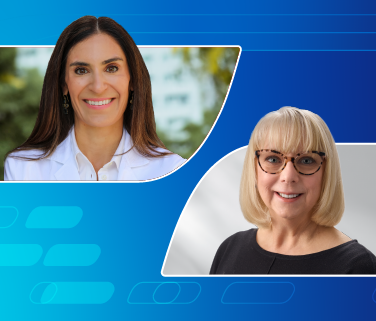Osteoporosis is a “silent” condition, meaning that bone loss can occur without symptoms, and typically individuals do not experience symptoms until a bone break.1 Because of this, many women may not know that they are at risk for developing postmenopausal osteoporosis.
In fact, two out of three women in the U.S. with postmenopausal osteoporosis at high risk of fracture will break a bone in their lifetime.2 However, there has been a decline in treatment since 2009, as fewer women are receiving bone density testing, and therefore may not be aware of their risk.3
In recognition of National Osteoporosis Awareness and Prevention Month this May, Amgen sat down with Dr. Kristi Tough-DeSapri, Women’s Health Specialist, and Debbie Dotson, an advocate living with postmenopausal osteoporosis, to get real about the condition and discuss how women can prioritize their bone health as they age.
Why is prioritizing bone health so important for women as they age?
Dr. Tough-DeSapri: Many women identify with recognizable menopause symptoms like hot flashes, night sweats, vaginal dryness and changes in sleep, mood or libido. With midlife comes a decrease in estrogen, which leads to bone loss and an increased risk for osteoporosis-related fractures. It’s important for women to be aware of these life changes by talking to their doctor to learn what can be done to maintain bone strength during aging.
Can you tell us about your experience being diagnosed with postmenopausal osteoporosis?
Dotson: I was formally diagnosed with osteoporosis in December 2022 after a routine bone density test. I had no symptoms that led to the test, but in retrospect, breaking a bone in my foot when I turned 60 should have triggered one of my doctors to examine my bone health more closely.
Recently, I reviewed my past medical records, and was shocked to discover that I had at least three bone density scans going back as far back as 2010, yet my doctors did not stress the importance of the findings during those visits or recommend follow up monitoring on my bone density.
What key steps do you take to address osteoporosis in your patients?
Dr. Tough-DeSapri: I perform DXA scans on all appropriate patients and add bone health to the conversation along with other midlife health concerns such as breast imaging, cardiovascular risk assessment, sexual health, and gynecologic care. Taking a detailed fracture history and family history is important. In high-risk patients, I explain the large body of scientific evidence that supports pharmacologic therapy and why we recommend certain medications.
What are the biggest misconceptions people have about osteoporosis?
Dr. Tough-DeSapri: Many women think bone loss, fractures, falls, and postural changes are inevitable signs of aging. I think this paradigm is shifting with more awareness and positivity around the postmenopausal years. There is a desire to be proactive about muscle and bone strength.
Dotson: My mom had severe OP due to malabsorption, and she used to say that her bones were like eggshells. Getting an osteoporosis diagnosis myself made me nervous. I initially felt like it could really change my active life to one of sitting in my recliner. I thought it would be significantly life-changing for the worse. Having worked with my doctors to treat my postmenopausal osteoporosis, I’m instead able to continue the lifestyle I enjoy.
How are you an advocate for women’s bone health?
Dr. Tough-DeSapri: In my practice I dedicate time to personalized clinical care. I’m involved in advocacy as a consultant for The Bone Health and Osteoporosis Foundation (BHOF) and The Menopause Society, and participate in academic and community lectures with Bone Health ECHO and other professional societies. I enjoy leveraging social media to add evidence-based but engaging content around bone health, osteoporosis, and menopause. Both in my practice and as an advocate, I enjoy helping women to better understand their bodies, risks and options to embrace aging.
Dotson: I’ve started talking about osteoporosis with others, and it is surprising to find out how many friends have been diagnosed! I feel as though osteoporosis carries a stigma of being “old” and most women don’t want to feel old or have others treat them as an “old lady”.
Being an advocate is important to me for many reasons. I want to use my voice to make osteoporosis not something women hide from others or downplay as a real disease. I want to help women further their care and make sure they are knowledgeable and get the answers they need when they speak to their doctors. I want women to know they aren’t alone, they can continue to live full lives, perhaps with medications and modifications, but enjoying their days just as they did before.
What is one thing you wish people knew about living with postmenopausal osteoporosis?
Dotson: That it is a real disease and, although invisible to others, needs to be addressed with the same urgency you’d treat heart disease, diabetes, and so on. You cannot eat or exercise this disease away. While eating properly and exercising is very important, that alone doesn’t make it go away. Be your own advocate, learn about your options, and do what is necessary to improve your specific situation.
What message do you want to share for National Osteoporosis Awareness and Prevention Month?
Dr. Tough-DeSapri: Osteoporosis related fractures are preventable. We need to prioritize bone health evaluations and, if necessary, treatment discussions earlier in women’s lifespans. If we consistently include bone health as part of midlife women’s health assessments, in media messages, in medical society guidelines and with insurance carriers, the diagnosis and treatment of osteoporosis may improve dramatically.
Dotson: Be careful, not fearful. Understand what is possible and focus on the positive. Getting this diagnosis doesn’t define you as a person. Knowledge is power—learn about your disease, don’t hide from it. Treatments are available to help reduce the risk of fractures.
References
- National Institute of Arthritis and Musculoskeletal and Skin Diseases. Osteoporosis. Accessed April 2024. https://www.niams.nih.gov/health-topics/osteoporosis
- Desai RJ, et al. JAMA Network Open. 2018;1(3):e180826
- Kim M, et al. Current Trends in Osteoporosis Epidemiology and the Widening Treatment Gap Among Commercially-Insured Postmenopausal Women in the United States (US). American Society for Bone and Mineral Research; September 9-12; Texas, United States 2022.





